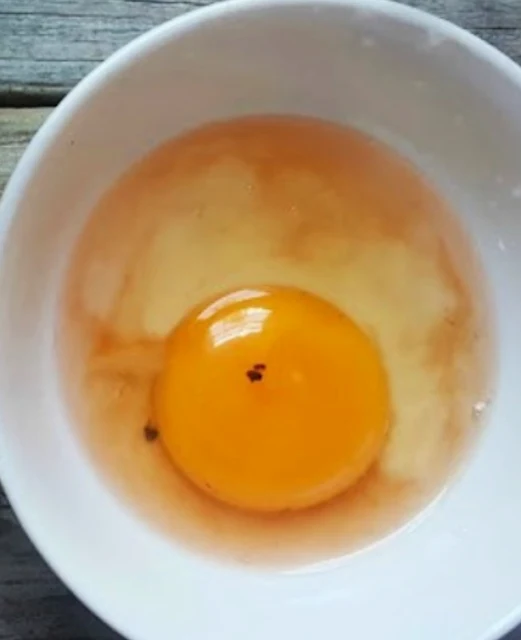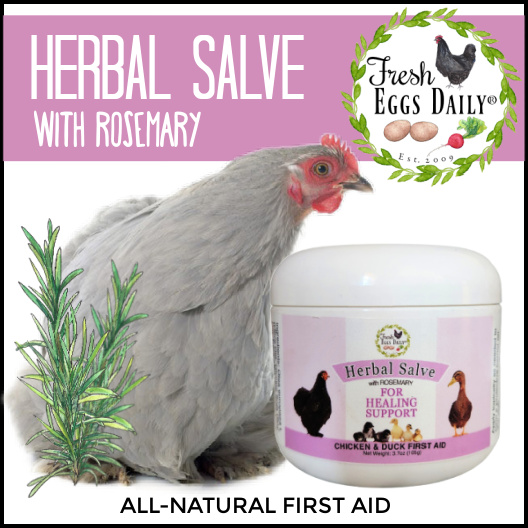Why are There Blood Spots in Fresh Eggs?
If you raise your own chickens or buy eggs from a local farm or farmers market, this has probably happened to you on occasion.
You crack an egg into the frying pan and notice a bright red blood spot on the yolk or in the egg white.
You might have assumed that meant the egg was fertile (not true) or that the egg isn't edible (also not true).
But at the very least, it's a bit off-putting.
Why are there Blood Spots in Fresh Eggs?
Despite the common misconception, a blood spot doesn't mean that egg has been fertilized. So what is it?
It's a topic that comes up often as new chicken keepers spring chicks start laying eggs. But in a nutshell (or should I say "eggshell").....a blood spot in an egg is harmless, albeit a bit distasteful.
What is a Blood Spot?
A blood spot on the yolk of an egg is NOT an indication that the egg is fertile, but instead it's merely caused by a small rupture in a blood vessel that ruptured as the hen was creating the egg.
Blood can sometimes clot in the egg as it's forming and small pieces of tissue from the hen's intestine ends up inside the egg.
Depending on where the blood spot is, indicates where the rupture took place.
If the blood spot is on the egg yolk, the rupture likely occurred in the ovary.
If the blood spot is in the egg white, the rupture occurred in the oviduct.
Causes of Blood Spots in Fresh Eggs
Laying eggs with blood spots can be genetic, or can be age or overall health-related, although spots often occur if the hen is startled or stressed while she's laying.
Blood spots often occur in these situations that can cause stress to a laying hen:
- not enough water
- low-quality feed
- moldy feed
- inadequate housing
- sudden loud noises
- Vitamin A deficiency
- Vitamin K deficiency
- Changing season (yup, really!)
Can Too Much Light Result in Blood Spots in Fresh Eggs?
It's also thought that blood spots will occur more frequently in eggs laid by chickens living in coops that are supplemented with artificial light to force them to lay, which doesn't provide them enough darkness to produce the levels of melatonin they need.
What is a "Meat Spot"?
Sometimes instead of a spot of blood, you might notice what looks like a solid blob. That's called a "meat spot" and is also generally harmless. It's simply a protein deposit in the egg. However, you might choose to fish it out with a piece of broken eggshell or the tines of a fork.
This is actually a sign that an egg is very fresh though, because as an egg ages, the meat spot will fade as it is absorbed into the egg, and disappear against the color of the egg yolk.Debris in Fresh Eggs
Sometimes you might also find more solid "debris" inside your fresh eggs.
Commercially sold eggs are candled, so any eggs with extraneous particles in them would likely not be sold, but in eggs from your backyard chickens you might occasionally find weird stuff.
This type of particle is unlikely to dissolve or disappear as the egg ages, and would definitely be distasteful to find in a plate of scrambled eggs, so it should definitely be discarded.
I'm unsure exactly how this happens, but sometimes debris in the oviduct gets caught up in the egg white as the egg is being formed and ends up inside the egg when the shell is formed.
How Common are Blood Spots in Fresh Eggs?
It's estimated that blood spots occur in a small percentage of eggs, roughly 2 to 4%.
However, blood spots rarely show up in a carton of store bought eggs because the eggs are candled (ie, a bright light is shined through the shell to detect them) and those eggs containing blood spots are discarded or used for animal feed.
However, brown eggs are more likely to contain blood spots, about 18% do according to some statistics, which poses a bit of a problem for commercial egg farms because a brown shell is harder to see through with a light.
Are Eggs with Blood Spots in Them Safe to Eat?
Generally, blood in chicken eggs is not anything to be concerned about and an egg with a blood spot in it is perfectly safe to eat.
But if you wish, you can fish the blood spot out with a tip of a knife or the tine of a fork.
Studies have also shown that eggs that contain meat spots might be more susceptible to salmonella.
Can a Blood Spot in Fresh Eggs Signal Illness in the Hen?
In rare cases, frequent blood spots can be a sign of avian encephalomyelitis (tremovirus). But this is not terribly common.






























